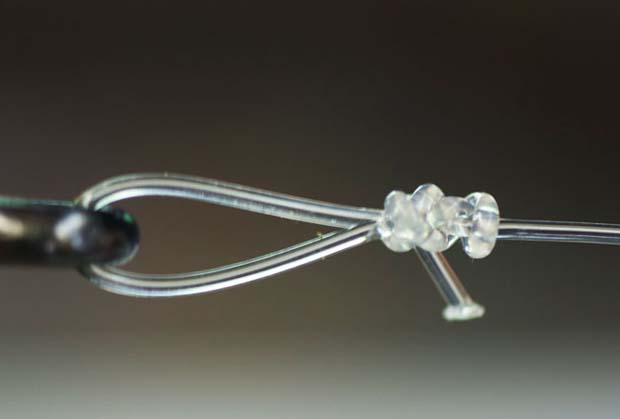By Skip Clement
[dropcap]W[/dropcap]hen DuPont first invented monofilament lines they were thicker and the surface was textured – not smooth as they are today. When the commercial and then sport fishing industries adopted mono, knot making changed dramatically. One adaptation was to wet the knot to aid in seating and to avoid ‘burning’ the mono. The practice of wetting the line lives on today, but it’s actually a myth and a negative to properly seating a knot.
I fish occasionally with a retired DuPont chemist, Mike, who said: “It would be impossible to ‘burn’ today’s monofilament lines via seating an un-wetted knot.” Mike added: “When we tested knots at Dupont, we found that the best knot tying practice was to tie it carefully – making sure there are no line cross-overs. A good practice is to seat the knot slowly but firmly, allowing the twists to form-up properly. If you wet the knot there is a probability of forming what is called a ‘liar knot’ (a liar knot is any knot that has not formed properly). Wetting the knot allows the twists and turns to slide over themselves. Within the knot a piece of line can cross-over another piece. The lines will then cut into themselves when the knot is jerked tight – dramatically lowering the line test strength.”
In addition Mike said: “Monofilament today is far more supple then just a few decades ago, and thinner for similar breaking strengths. Knots can be formed more easily. The surface of mono lines are very smooth, and with little friction quotient. It is because modern lines are thinner and more supple, that you should not wet your knot.”
Also, today there are glues in many forms that aid knot strength.
[information]
Monofilament can absorb water, especially in deep water fishing, resulting in loose knots, and its sensitivity can decrease when it is wet. Monofilament degrades with time and can weaken when exposed to heat and sunlight. When stored on a spool for a long time, it may come off the fishing reel in coils or loops. It is advisable to change monofilament line at regular intervals to prevent degradation
[/information]


